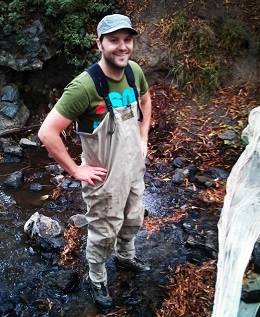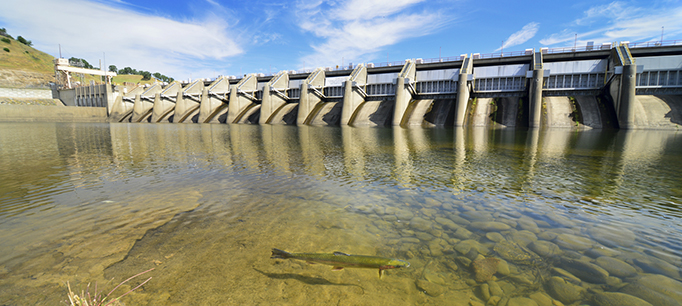Freshwater species—especially fish—are in trouble, and it’s not just the latest drought that put them there. We talked to Ted Grantham, a river scientist at UC Berkeley and a member of the PPIC Water Policy Center’s research network, about the status of the state’s freshwater ecosystems.
 PPIC: Drought has really hurt populations of native fishes. Aren’t these fishes adapted to drought?
PPIC: Drought has really hurt populations of native fishes. Aren’t these fishes adapted to drought?
Ted Grantham: California’s native fish have been in steady decline for at least 50 years—in part due to dams, habitat degradation, and the introduction of non-native species. Drought is an added stressor. California has a highly variable climate, with dramatic changes in rainfall and stream flow from year to year. Native fishes have developed several strategies to cope, but key to their long-term survival is their ability to recover from drought during wet years. It’s a “boom and bust” ecosystem. The problem is that we capture and divert a significant portion of available water in wet years, making it harder for the fishes to recover. Since 1975 the state has had about 15 years that were above-normal or wet years. But in the Delta, for example, the ecosystem only experienced about half that many wet years because of water diversions. During this same period, California has had fewer than five extreme dry years, but the Delta experienced about 20 from the ecosystem’s perspective. Essentially, our freshwater ecosystems are now experiencing a perpetual drought. The boom and bust ecology has lost its boom.
PPIC: A number of California fish populations hit new lows in this drought. What can we do to prevent extinctions?
TG: There are at least three strategies that would help us better manage our native freshwater fishes. First, we need to better define the amount of water needed to sustain healthy fish populations. The ability to protect flows for ecosystem benefits also depends on an accurate accounting system for tracking water availability and use; we have a long way to go on this. And we need to recognize that not all streams are created equal—some streams are disproportionately important for supporting biological diversity. Currently, the state doesn’t have a plan to identify and protect those areas. We need to be more strategic in conserving the places that matter most.
PPIC: What kinds of problems will climate change pose for California’s ecosystems, and what can we do about it?
TG: For many of our native fish species—especially salmon—California is the southern extent of their natural range. So we’re already at the limits of their tolerance for warm temperatures. As the climate gets warmer, life will be increasingly difficult for these species. We’re already seeing that species dependent on cold water are responding to climate warming by moving to cooler streams, such as those at higher elevations. The problem is we’ve constructed so many dams on our rivers that fish might not be able to migrate to these preferred locations—the dams act as barriers to fish movements. California has at least 1,400 large dams and thousands of smaller ones. We need to start identifying critical barriers to fish movement and take a closer look to determine if modifying these structures—or in some cases removing dams—is a feasible strategy to restore connectivity in our rivers and streams.
The second adaption strategy is protecting “climate refugia”—areas naturally buffered from climate change—to support cold-water species. Some rivers and streams appear to be more resilient to climate change and provide sustained, cool flows despite warming air temperatures—because they are fed by groundwater springs or have a northern exposure, for example. Identifying and protecting these kinds of refugia could help minimize the loss of species in a warmer future.
I am actually optimistic about the future. Although the drought has severely affected California’s freshwater ecosystems, it also has raised awareness about the need to improve water management and better prepare for climate change. We’ve begun to address longstanding problems, such as poor groundwater management. We’re also starting to realize that the health of our ecosystems is tied to the reliability and quality of our water supply, which is leading to creative and more integrated solutions that balance human and ecosystem needs.
Read “How Much Water Does Nature Need?” (PPIC blog, June 29, 2016)
Read “Lessons on Sustaining the Environment During Drought” (PPIC blog, June 23, 2016)
Visit the PPIC Water Policy Center’s ecosystems resource page


